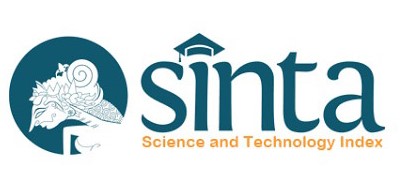Comparison Between Hydrocortisone and Dexamethasone Given Intraperitoneally for Postoperative Pain Relief in Patients After Laparoscopic Hysterectomy – an Observational Study
Abstract
Background: Pain after laparoscopic surgeries is a common complaint which can prolong hospital stay and delay recovery. Different methods have been developed to manage pain after laparoscopic hysterectomy. One such technique is intraperitoneal instillation of local anaesthetics with adjuvants like hydrocortisone, dexmeditomedine, magnesium sulphate. Various studies have confirmed the efficacy of local anaesthetics with hydrocortisone for analgesia. Studies comparing sole use of steroids are few. We thus devised to conduct a study to compare how effective hydrocortisone or dexamethasone administered intraperitoneally is in causing relief from pain after laparoscopic hysterectomy.
Methods: We conducted an observational study, 60 patients planned for laparoscopic hysterectomy were classified into two groups. Group A (n=30) who received 100 mg hydrocortisone in 50 ml normal saline intraperitoneally and Group B (n=30) who received 8 mg dexamethasone in 50 ml normal saline intraperitoneally. Abdominal and shoulder pain was assessed using visual analogue scale (VAS) at 1, 6, 12 and 24 hour after surgery.
Results: Both Group A and B had similar efficacy in providing both abdominal pain and shoulder pain relief post operatively. Both groups had no rescue analgesic requirement after 12 hour. Both drugs were has low incidence of postoperative nausea and vomiting (PONV).
Conclusion: Intraperitoneal dexamethasone is as equally effective as hydrocortisone in providing postoperative analgesia and antiemesis after laparoscopic hysterectomy
Keywords
Full Text:
PDFReferences
El-Labban G, Hokkam E, El-Labban M, Morsy K, Saadl S, Heissam K. Intraincisional vs intraperitoneal infiltration of local anaesthetic for controlling early post-laparoscopic cholecystectomy pain. J Minim Access Surg. 2011;7(3):173-177. doi:10.4103/0972-9941.83508
Boddy AP, Mehta S, Rhodes M. The effect of intraperitoneal local anesthesia in laparoscopic cholecystectomy: A systematic review and meta-analysis. Anesth Analg. 2006;103(3):682-688. doi:10.1213/01.ANE.0000226268.06279.5A
Golubović S, Golubović V, Cindrić-Stančin M, Tokmadžić VS. Intraperitoneal analgesia for laparoscopic cholecystectomy: bupivacaine versus bupivacaine with tramadol. Coll Antropol. 2009;33(1):299-302. Accessed February 19, 2023. https://pubmed.ncbi.nlm.nih.gov/19408641/
Abdulla S, Eckhardt R, Netter U, Abdulla W. A randomized, double-blind, controlled trial on non-opioid analgesics and opioid consumption for postoperative pain relief after laparoscopic cholecystectomy. Acta Anaesthesiol Belg. 2012;63(1):43-50.
Khan MR, Raza R, Zafar SN, et al. Intraperitoneal lignocaine (lidocaine) versus bupivacaine after laparoscopic cholecystectomy: results of a randomized controlled trial. J Surg Res. 2012;178(2):662-669. doi:10.1016/j.jss.2012.06.005
Roberts KJ, Gilmour J, Pande R, Hodson J, Lam FT, Khan S. Double-blind randomized sham controlled trial of intraperitoneal bupivacaine during emergency laparoscopic cholecystectomy. Hepatobiliary Pancreat Dis Int. 2013;12(3):310-316. doi:10.1016/s1499-3872(13)60049-1
Asgari Z, Mozafar-Jalali S, Faridi-Tazehkand N, Sabet S. Intraperitoneal dexamethasone as a new method for relieving postoperative shoulder pain after gynecologic laparoscopy. Int J Fertil Steril. 2012;6(1):59-64.
Sarvestani AS, Amini S, Kalhor M, Roshanravan R, Mohammadi M, Lebaschi AH. Intraperitoneal hydrocortisone for pain relief after laparoscopic cholecystectomy. Saudi J Anaesth. 2013;7(1):14-17. doi:10.4103/1658-354X.109799
Nouri B, Arab M, Lotfpour S. Efficacy of Intraperitoneal Dexamethasone Infusion in Reduction of Shoulder Pain and Nausea/Vomiting After Gynecological Laparoscopy. Fertility, Gynecology and Andrology 2021 1:1. 2021;1(1):115089. doi:10.5812/FGA.115089
Bisgaard T, Kehlet H, Rosenberg J. Pain and convalescence after laparoscopic cholecystectomy. Eur J Surg. 2001;167(2):84-96. doi:10.1080/110241501750070510
Srivastava V, Shree P, Agrawal S, Pandey A, Babbar K, Manju K. Comparison of intraperitoneal dexamethasone, dexmedetomidine, and dexamethasone–dexmedetomidine combination on postoperative nausea, vomiting, and analgesics requirement after gynecological laparoscopy: A randomized clinical trial. Bali Journal of Anesthesiology. 2022;6(4):225. doi:10.4103/bjoa.bjoa_202_22
Ismail EA, Abo Elfadl GM, Bahloul M. Comparison of intraperitoneal versus intravenous dexamethasone on postoperative nausea and vomiting after gynecological laparoscopy: a randomized clinical trial. Korean J Anesthesiol. 2019;72(1):47-52. doi:10.4097/kja.d.18.00132
Kankotiya AR. Intraperitoneal Hydrocortisone plus Bupivacaine Administration for Pain Relief after Laparoscopic Cholecystectomy, a Comparison with Bupivacaine Alone. Journal of Medical Science And clinical Research. Published online September 16, 2016. doi:10.18535/jmscr/v4i9.40
Choi JB, Kang K, Song MK, Seok S, Kim YH, Kim JE. Pain Characteristics after Total Laparoscopic Hysterectomy. Int J Med Sci. 2016;13(8):562-568. doi:10.7150/ijms.15875
Hsieh CY, Poon YY, Ke TY, et al. Postoperative Vomiting Following Laparoscopic Cholecystectomy Is Associated with Intraoperative Fluid Administration: A Retrospective Cohort Study. Int J Environ Res Public Health. 2021;18(10):5305. doi:10.3390/ijerph18105305
DOI: http://dx.doi.org/10.21776/ub.jap.2023.004.01.02
Refbacks
- There are currently no refbacks.

This work is licensed under a Creative Commons Attribution 4.0 International License.









.png)

